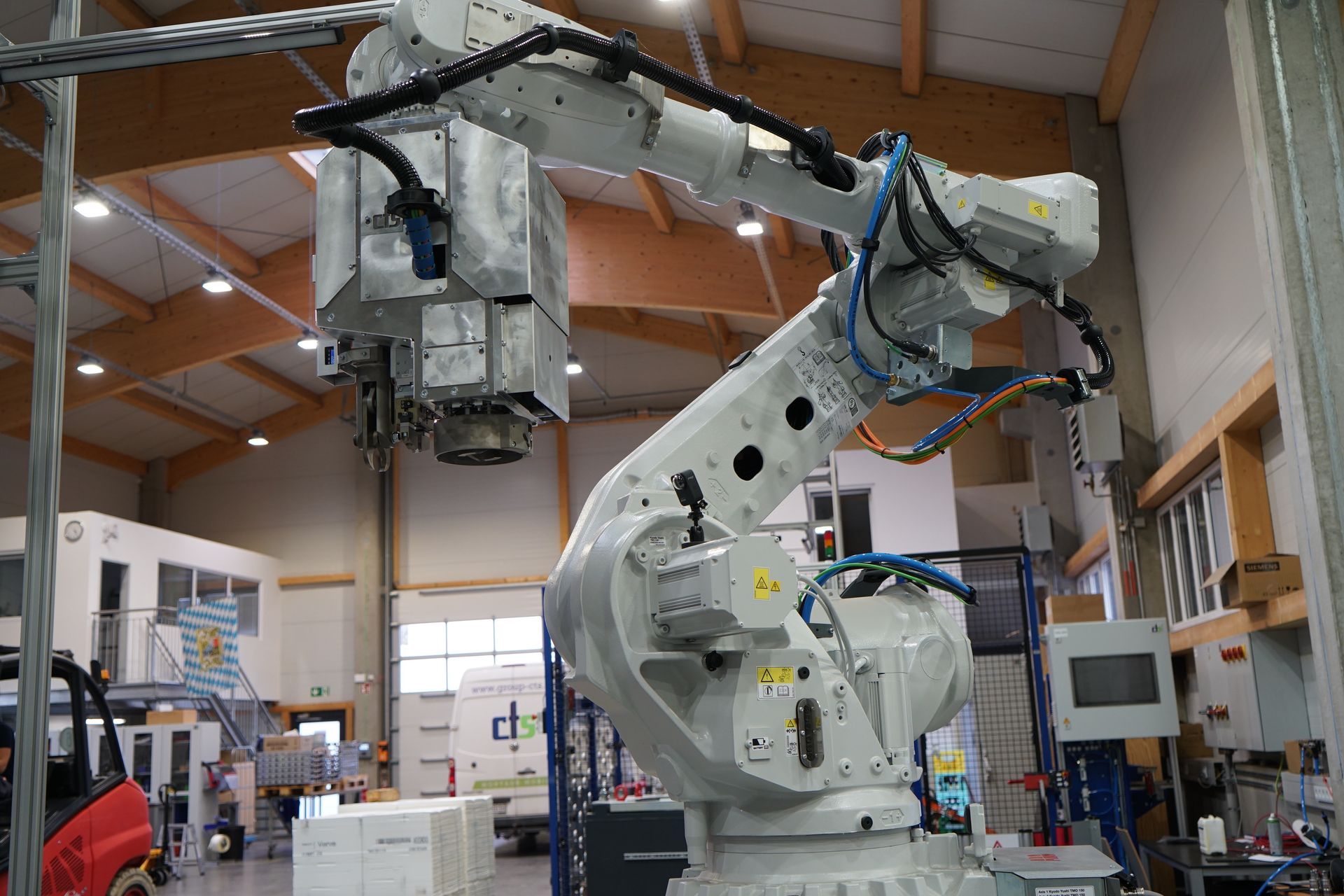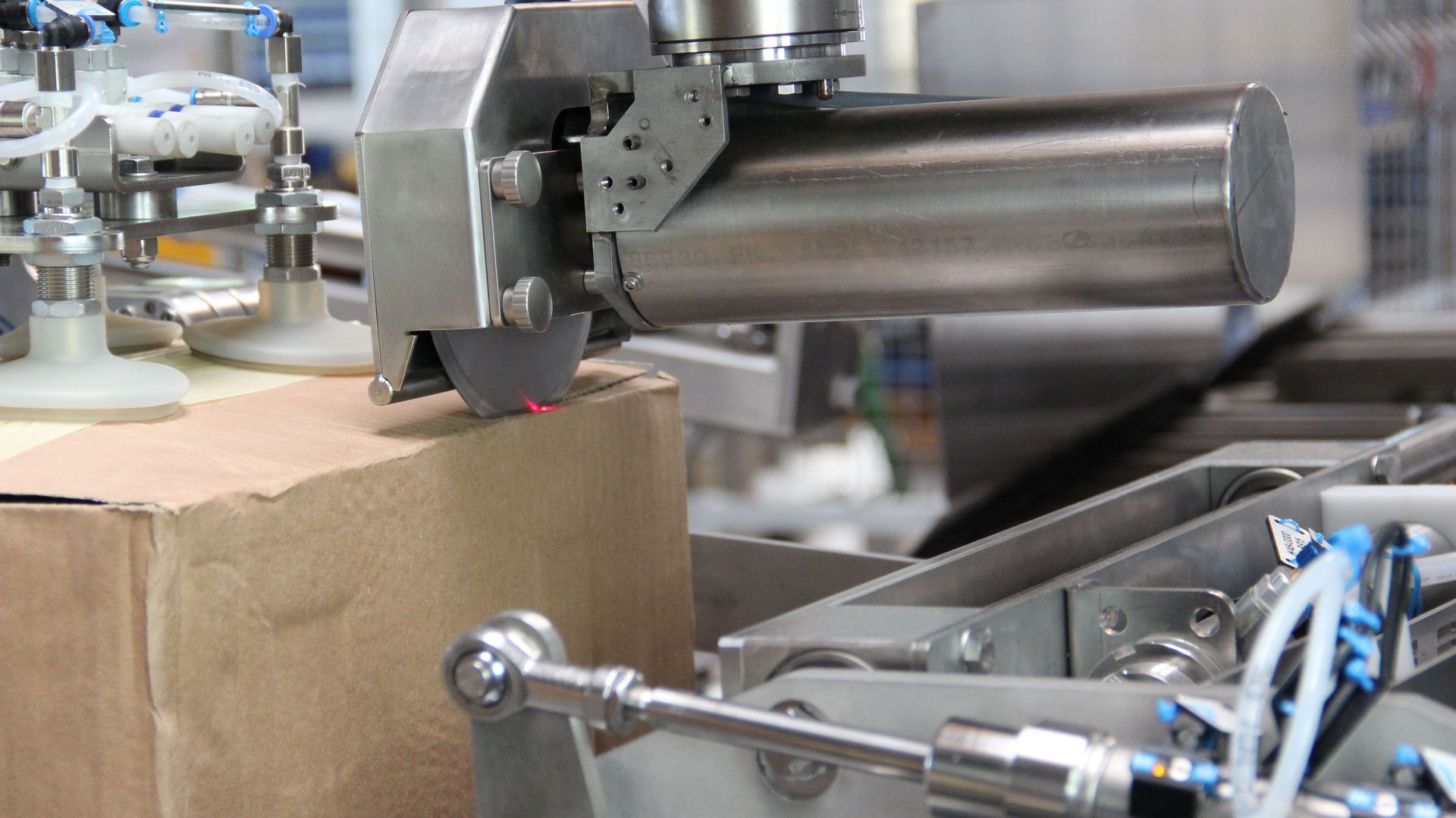Facts and Applications of Industrial Robots
What is an Industrial Robot and How Does it Differ from Other Robots?
An industrial robot is a programmable mechanical manipulator designed to perform specific tasks such as moving, assembling, or processing objects. These automated systems are typically well-suited to take over repetitive and labor-intensive tasks from workers in industrial production facilities.
Compared to other robots, such as service robots, which are developed for general support and service activities, like in elderly care or building cleaning, industrial robots are generally characterized by their higher payload capacity and precision, as well as their specific design for harsh environments in manufacturing. Industrial robots are usually built to be especially robust and durable to meet the high demands of industrial settings.
The focus of industrial robots is on performing precise and fast manufacturing processes. In contrast, mobile robots or autonomous vehicles are distinguished by their ability to move independently in complex environments.
Overall, industrial robots form a specialized category of robots. Their primary applications are found in manufacturing and assembly, and they differ significantly in design and function from other types of robots.



What Are the Main Applications of Industrial Robots?
Industrieroboter werden generell für Aufgaben eingesetzt, die für den Menschen repetitiv, ermüdend oder gefährlich sind. Eine der zentralen Aufgaben von Industrierobotern ist das punktgenaue und schnelle Positionieren von Werkstücken oder Werkzeugen. Beispielsweise um Fertigungsschritte wie Schweißen, Kleben oder Montieren zu automatisieren. Hierbei sind Industrieroboter aufgrund ihrer Präzision und Geschwindigkeit besonders effektiv und leistungsfähig. Durch die dadurch optimierten Produktionsprozesse führt dies letztendlich zu einer höheren Qualität der Endprodukte.
Darüber hinaus sind Industrieroboter auch für das Handling und die Sortierung von Materialien, wie beispielsweise in der Verpackungsindustrie oder bei der Palettierung eingesetzt. Die Automatisierung dieser Arbeitsprozesse ermöglicht es Unternehmen, ihre Effizienz zu steigern und gleichzeitig die Fehlerquote zu reduzieren. Ebenso sind Industrieroboter in der Inspektion von Werkstücken und Qualitätssicherung von großer Bedeutung. Mithilfe von Bildverarbeitungssoftware können durch Industrieroboter hochpräzise Messungen und Prüfungen durchführen können.In de
Kurz gesagt, die Haupteinsatzzwecke von Industrierobotern umfassen somit die Automatisierung von Produktionsschritten, das Handling und Sortieren von Materialien, sowie die Inspektion von Werkstücken und Qualitätssicherung – allesamt essenzielle Aspekte für einen effizienten und effektiven Produktionsprozess.
How Are Industrial Robots Used?
The range of applications for industrial robots spans from simple handling and transport tasks to the manufacturing of complex components or the assembly of electronic parts. Robots are especially used in the automotive industry and electronics manufacturing. In welding and painting, industrial robots have become indispensable. However, they are also used in many other industries, such as food processing, packaging, and pharmaceuticals.
Thanks to the flexibility and adaptability of robots, they can be integrated into various workflows. Depending on the requirements and application, they are equipped with different grippers and tools to perform their tasks precisely and quickly.
How Can Industrial Robots Simplify the Production Process?
Robots are capable of performing repetitive and complex tasks with minimal errors and maximum consistency. They can carry out these tasks with high precision and reliability. This not only improves product quality but also helps reduce scrap and rework. Furthermore, industrial robots contribute to increasing production speed by working 24/7, thus reducing manufacturing times. This is especially beneficial in industries where fast response times and short delivery times are critical.
Another important aspect is the flexibility that industrial robots offer. Modern robots feature a modular design and can be equipped with various tools and attachments, allowing them to adapt to different production tasks. With the introduction of new products and the need to adjust to market changes, expensive and time-consuming modifications to the production line become unnecessary. Industrial robots can also take over dangerous or ergonomically unfavorable environments, reducing the risk of workplace accidents and health-related strain on employees.
Which Key Industries Use Industrial Robots?
- Automotive Industry: The automotive industry has been a pioneer in using robots in production. For decades, industrial robots have been used to assemble vehicle components such as car bodies and engines. By ensuring high precision and speed, companies can increase production capacity and maintain the quality of their vehicles.
- Electronics Industry and Semiconductor Manufacturing: These industries are major beneficiaries of industrial robot capabilities. Robots are especially used for the assembly of small components and the manufacture of computer chips, ensuring high precision and efficiency.
- Food and Packaging Industry: Industrial robots are used for handling, packaging, and palletizing food and goods. They are capable of handling delicate products, such as fruits or bakery goods, quickly and precisely, without damaging them.
- Pharmaceutical Industry: The pharmaceutical industry also relies on industrial robots, particularly for filling, packaging, and quality control of medications. Precision and hygiene are of utmost importance to ensure the health and safety of consumers.
- Metal, Grinding, and Assembly Industry: In these industries, industrial robots are used to increase productivity and reduce costs, helping manufacturers optimize their processes.
Technological Advancements of Industrial Robots
A major innovation is collaborative robotics, where industrial robots can now work directly alongside human workers. By using sensors and artificial intelligence, these robots are capable of adapting their movements to the presence and actions of people in their environment. This enables safer and more efficient collaboration between humans and machines.
Another significant advancement is the integration of machine learning and artificial intelligence into industrial robots. These technologies allow robots to learn from experience and continuously improve their capabilities and workflows. As a result, they become more precise, faster, and more reliable, leading to a significant increase in productivity and quality in manufacturing.
An important development is the growing autonomy of industrial robots. The latest models are often capable of making independent decisions and handling complex tasks without human intervention. This not only helps prevent errors but also increases flexibility in production, as these robots can be quickly and easily adapted to changing requirements.
Advantages of Industrial Robots
Industrial robots are known for their precision and speed in performing tasks that are often tedious and time-consuming for humans. This enables an increase in production capacity and shorter manufacturing times. Since industrial robots can work around the clock, companies can boost productivity and manufacture more products in less time.
Another advantage is the reduction of errors in production. Due to their precision and accuracy, industrial robots help improve the quality of products and reduce scrap.
Moreover, they are capable of taking on dangerous or health-hazardous tasks, which reduces the risk of workplace accidents and health-related strain on employees. This helps companies save on costs related to workplace accidents and employee absences.
Additionally, industrial robots offer high flexibility in production, as they can be quickly and easily reprogrammed for various tasks. This allows companies to optimize their production lines and respond quickly to changing market demands, new product variants, or short-term spikes in orders. Overall, the use of industrial robots leads to increased competitiveness as companies can reduce their costs.
Unternehmen | About cts
Kontakt | Contact
Karriere | Career
Impressum | Imprint
Datenschutz | Privacy
AGB | GTC
Blog | News
Presse | Press
Glossar | Glossary

cts GmbH competence for technical solutions
Fuhrmannstraße 10
84508 Burgkirchen a.d. Alz
All rights reserved cts GmbH 2025 ©


